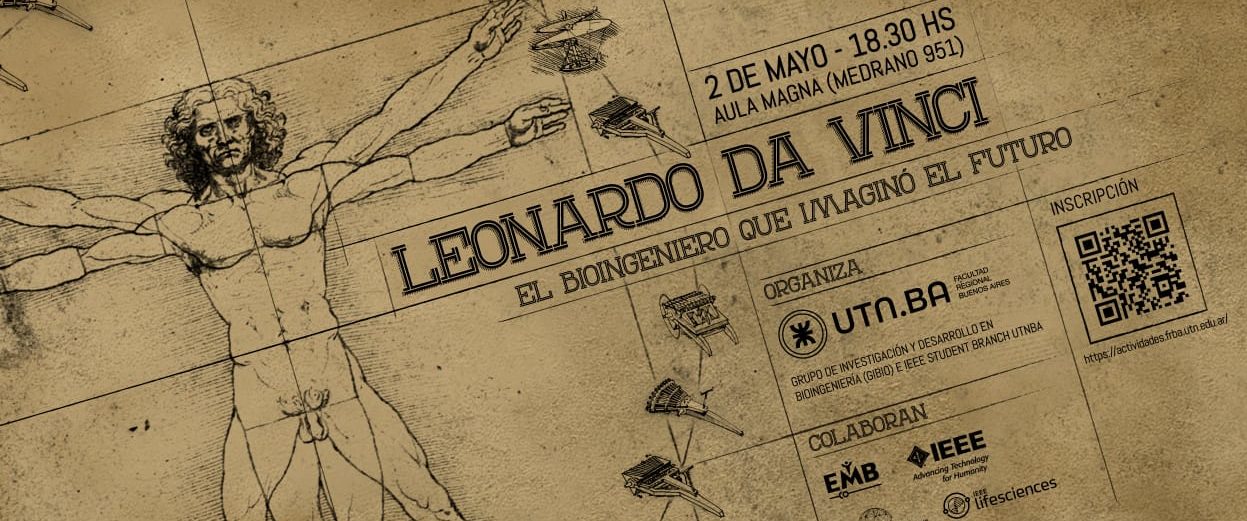UTN Buenos Aires honored the 500th anniversary of Leonardo Da Vinci’s death
With a master speech, PhD Ricardo Armentano honored the universal genius who became a source of inspiration for both engineers and researchers.

UTNBA honored the 500th anniversary of Leonardo Da Vinci’s death on May 2 in the Aula Magna with a master speech in charge of PhD Ricardo Armentano, Director of the Bioengineering Research and Development Group (GIBIO).
The event was retransmitted via streaming during the official honoring events that took place in Florence, Italy.
Leonardo Da Vinci was not only recognized for being a plastic artist but also the first bioengineer, a great innovator.
“The aim of this talk was to empower Leonardo Da Vinci’s figure 500 years after his death so as to transmit his imagination and curiosity, which developed in him an inexhaustible zeal for knowledge and learning,” Armentano pointed out.
According to the UTNBA researcher and the Director of the PhD in Engineering with a Specialization in Signal and Image Processing, Leonardo exhibited futurological talents which were captured in his sketches and diagrams, such as the glider, helicopter, hovercraft, submarine, among others. His contemporaries considered them crazy dreams, utopias.
“The most precious legacy he left is not his 21 paintings or the almost 100.000 drawings and sketches but a new way of thinking and his capacity to interconnect the diverse fields of knowledge adopting the concept of “interdisciplinarity”, which is fundamental in bioengineering and modern engineering,” he highlighted.
PhD Walter Legnani, director of the UTN Buenos Aires Signal and Image Processing Centre and PhD Jorge Monzón in representation of International Federation of Medical and Biological Engineering and the Institute of Electrical and Electronics Engineers (IEEE) attended the event.
Leonardo da Vinci died on May 2, 1519. He was only 67 years old and he left a legacy that included diverse disciplines. He was a painter, an anatomist, an architect, paleontologist, botanist, scientist, writer, sculptor, philosopher, engineer, inventor, musician, poet and urbanist.
His creations became an inspiration for the generations of researchers, engineers, and artists, among others, who followed.



